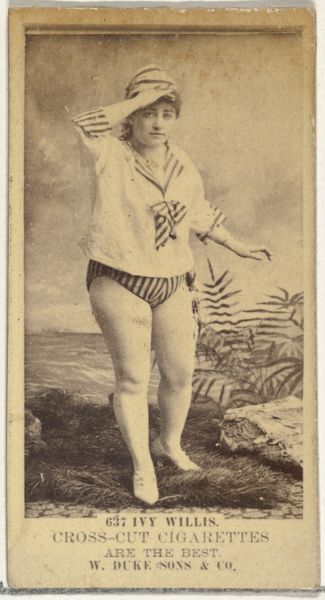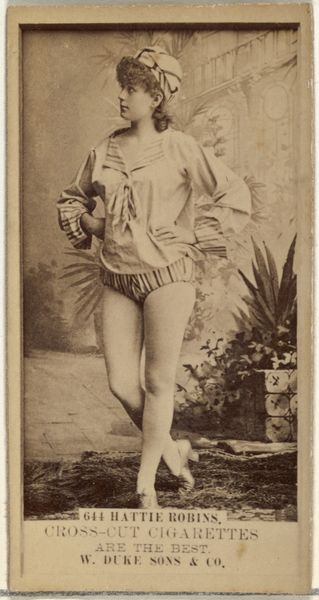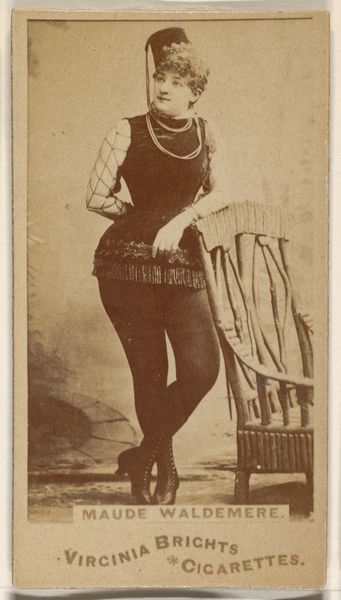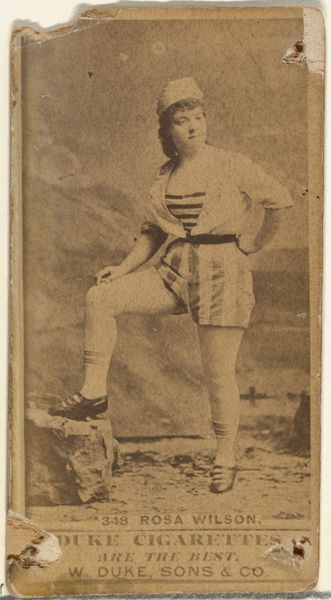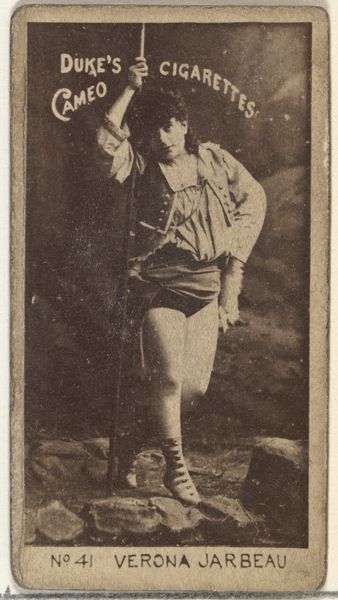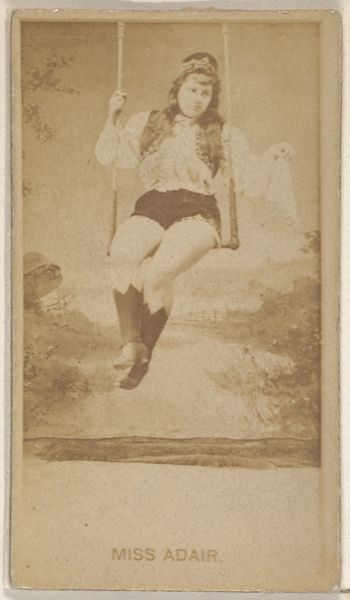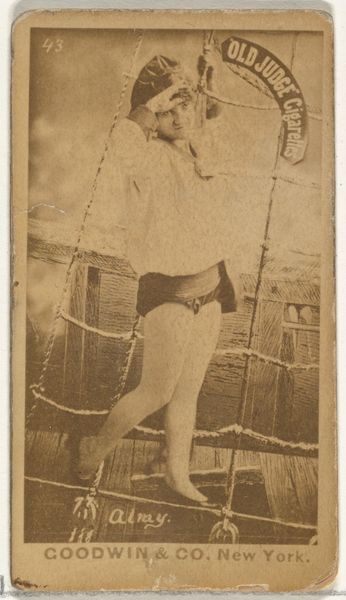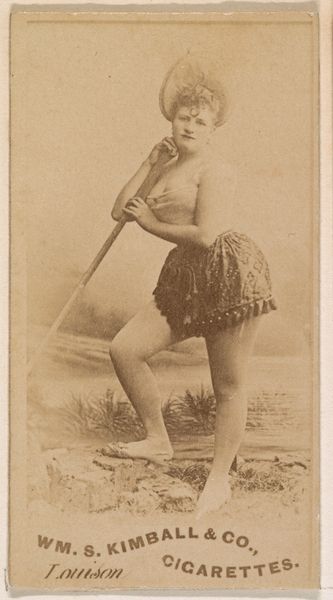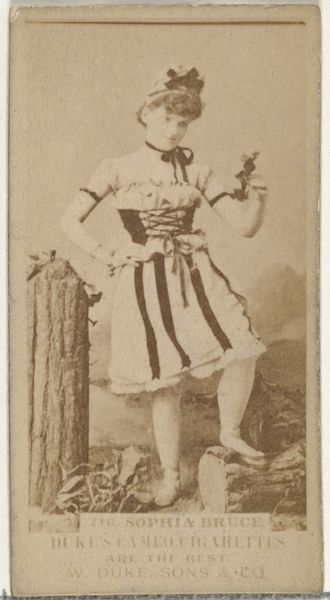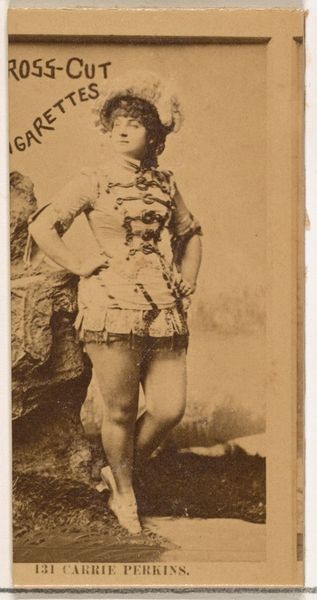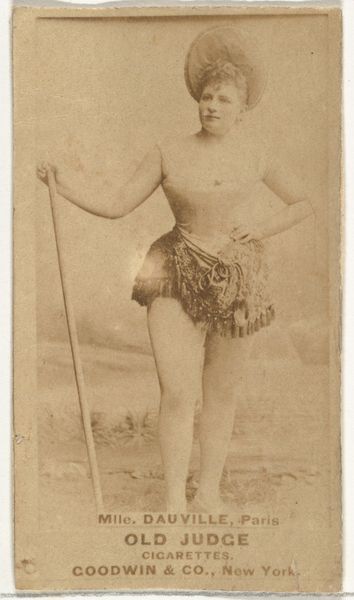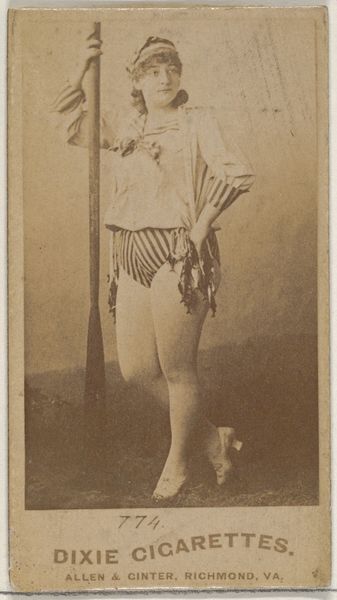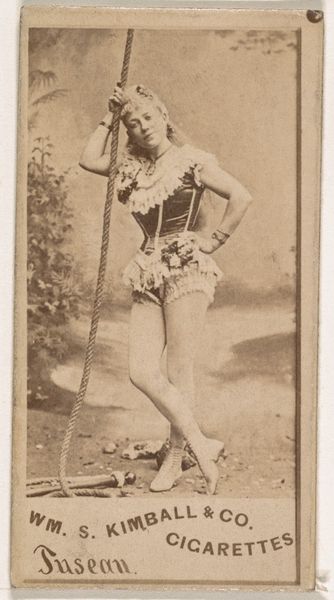
British India, from the Dancing Girls of the World series (N185) issued by Wm. S. Kimball & Co. 1889
0:00
0:00
#
portrait
#
16_19th-century
#
girl
# print
#
figuration
#
orientalism
Dimensions: Sheet: 2 11/16 × 1 1/2 in. (6.8 × 3.8 cm)
Copyright: Public Domain
Editor: This is "British India," a print from the "Dancing Girls of the World" series by Wm. S. Kimball & Co., dating back to 1889. I find it striking how idealized the figure is, yet there's also a sense of staged exoticism about it. What’s your take on this piece? Curator: It's crucial to remember these were commercial images, essentially trade cards included with tobacco products. They circulated widely and thus significantly shaped perceptions of "exotic" cultures. The Orientalist style here wasn’t necessarily about accuracy, but about constructing an appealing fantasy for Western consumers. Do you see how the title "British India" already sets a colonial power dynamic? Editor: I do now, with the name boldly claiming ownership and reducing this woman to a symbol. I guess I was initially drawn to the visual appeal, the colors and the woman's pose, but hadn't fully considered the political implications of it being mass-produced. Curator: Exactly. It prompts us to consider how these images contributed to a visual vocabulary that justified and perpetuated colonial power. Her ‘dance’ becomes a performance *for* the Western gaze. Ask yourself, where would images like this have been displayed? And who would be viewing them? Editor: Likely in places like pubs, homes – places where men, specifically, gathered and reinforced these exoticized and colonial views. So it wasn't just art for art's sake, but propaganda in a way? Curator: Precisely. The power of images in shaping societal attitudes cannot be overstated. This seemingly innocent 'dancing girl' card actively participated in constructing and solidifying a colonial mindset. What did you take away from that realization? Editor: Well, I certainly won't look at seemingly harmless images the same way again. I have a deeper awareness of the cultural forces that shaped their production and reception. Thanks!
Comments
No comments
Be the first to comment and join the conversation on the ultimate creative platform.
